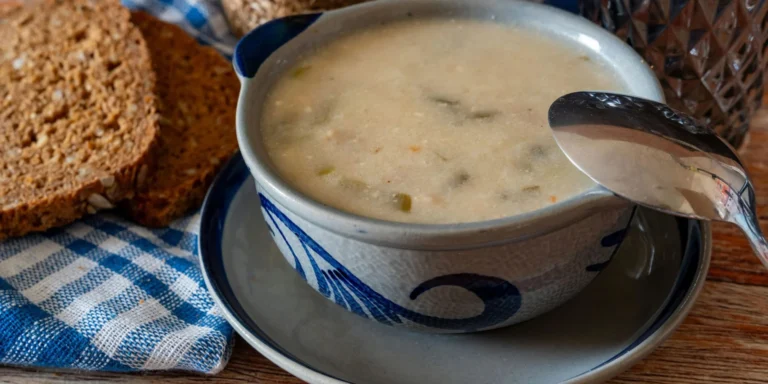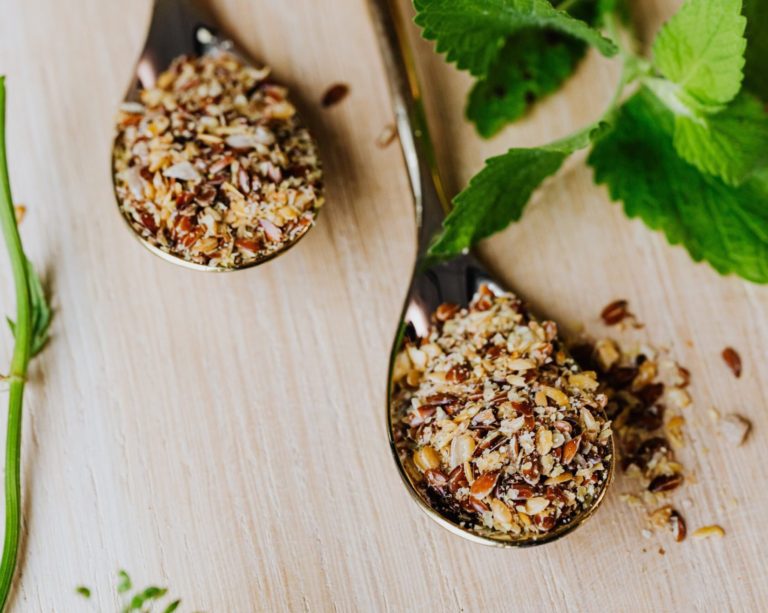Food intolerances are never fun to deal with. Cutting out any food takes readjustment and effective coping mechanisms.
However, if you’re only cutting out one or a couple of foods – in the case of a new food allergy or two, Celiac Disease, a sensitivity to some FODMAPs, Lactose Intolerance, Non-Celiac Gluten Sensitivity, or something similar – it’s doable with some effort.
But, when the list of foods you can’t tolerate begins to grow longer, and the list of foods you can eat shrinks to a handful of choices, the issue at hand becomes more complicated.
Based on my formal education and experience with nutrition, I do not think it is a good idea to cater to multiple food intolerances long term, because it is too limiting and can lead to disordered eating habits and nutritional deficiencies.
Multiple food intolerances have a cause, and the cause can often be pinpointed and addressed, allowing you to enjoy a variety of healthy foods once again.
Does that sound too good to be true? Let me explain.
A highly suspected cause of multiple food intolerances is intestinal hyperpermeability, also known as leaky gut.
A wide range of things can contribute to the development of leaky gut – like gut dysbiosis, long term stress, NSAID usage, poor diet, autoimmune disease, and Undiagnosed Celiac Disease – but the result is the same regardless of the cause –
Weakened junctions in your intestinal lining let partially-digested food particles, yeast, and bacteria from the GI tract “leak” through into the bloodstream (source).
You can find the leaky gut testing we recommend, here.
It’s important to find and address the cause of your leaky gut in order to help your gut heal. However, the work doesn’t stop there.
Once you have leaky gut, every time you eat, partially-digested food particles can “leak” through the intestinal wall into the bloodstream.
Understandably, the immune system sees these foreign particles as invaders and creates antibodies to them (source).
And, presto – you have a new food intolerance.
As times goes on, your immune system will make more and more antibodies to the foods you eat. This can manifest in uncontrollable IBS symptoms and the inability to tolerate any food.
The immune system attack further weakens the gut lining, and the cycle goes on.
*When you have severe GI symptoms, it is crucial to rule out disorders like Crohn’s, Ulcerative Colitis, and cancer, so please see a health practitioner first before attempting to self-treat with a diet.
Aside from addressing the original cause of your leaky gut, what can you do to stop this?
My husband, Jonathan, completed 4-day Rotation Diet, and it worked.
He spent years on various gut-healing diets, but nothing helped. Eventually, he was down to 7-8 foods he could tolerate and had go on a liquid elemental diet to survive. Right before our wedding.
That’s where a 4-Day Rotation diet saved him.
The problem with most gut healing diets is that they limit what you can eat to a handful of safe foods. When everything you eat is going through the intestinal barrier partially digested, that means your body will make a lot of antibodies to the few foods you are still consuming on your gut-healing diet, because you are eating them so frequently. It’s a vicious, sabotaging cycle.
The 4-Day Rotation Diet works by limiting the ingestion of a food item to every 4 days, so it is completely out of your system before you consume it again (source).
This gives the immune system time to stop, or at least slow, the production of antibodies to that food.
As the immune system stops producing antibodies, you’ll be able to tolerate more foods.
Eventually, as the immune system is no longer attacking the gut lining, your gut will have the chance to heal so you can resume a varied, healthy diet.
But, how in the world are you supposed to do a 4-day rotation diet?
It’s overwhelming to iron out the details while battling severe digestive distress and chronic illness.
We’ve been there, so that’s why I’m taking the time to share exactly how we did it.
Just remember, please do not substitute anything in this educational blog post for the personalized advice of your health practitioner.
Our 4-day rotation diet meal plan was also low-FODMAP and primal. Without those restrictions, you would have more choices in planning your meals. In general, for each of the four days, you need to choose 2 fruits, 2+ vegetables, a source of cooking fat, dairy and/or a tree nut and/or a seed for protein and “milk”, a primary source of protein (legumes/soy, eggs, red meat, fish, poultry, etc.), and 1-2 sources of complex carbohydrates (sweet potatoes, potatoes, rice, GF oats, millet, quinoa, buckwheat, root vegetables, etc.). It’s up to you how strict you are with spices and other flavor agents.
Our 4-Day Rotation Diet Plan
Day One
- Coconut milk & coconut products
- Coconut oil
- Pineapple
- Papaya
- Beef
- Winter squash
- Carrots & parsnips (root vegetables)
Dinner and Lunch: Beef stew with allowed ingredients (omit wine and garlic, substitute arrowroot starch for the flour, parsnips for the potato, and green onions for the yellow onion), ground beef and veggie scramble (substitute green onions for yellow onion and sweet bell pepper for serrano pepper, omit the garlic).
Breakfast: Smoothie with pineapple, papaya, and full-fat coconut milk.
Day Two
- Homemade almond milk & almond products (almond butter, etc.)
- Butter & ghee
- Banana
- Blueberries
- Chicken
- White rice & rice pasta
- Green beans
Dinner and Lunch: Chicken tenders breaded with almond flour or chicken drumsticks (with allowed ingredients); rice pasta or white rice with homemade creamy bechamel sauce (with almond milk, butter or ghee, and brown rice flour); steamed green beans.
Breakfast: Smoothie with almond milk & butter, banana, and blueberries.
Day Three
Homemade pecan milk & pecan products
Olive oil
Strawberries
Kiwi
Fish
Sweet potatoes, orange & white
Zucchini and yellow squash (summer squash)
Dinner and Lunch: Baked salmon, baked dover sole, or salmon patties (with allowed ingredients); baked, diced and roasted, or mashed sweet potatoes; summer squash “zoodles“, sauteed summer squash, or summer squash “hashbrowns“.
Breakfast: Smoothie with pecan milk & butter, strawberries, and kiwi.
Day Four
Homemade walnut milk & walnut products
Avocado oil
Raspberries
Oranges
Turkey
Potatoes – Russet, Yukon Gold, & Red
Broccoli
Dinner and Lunch: Baked turkey breast cutlets, turkey drumsticks, or turkey meatballs (substitute green onions for yellow onion) with allowed ingredients; baked, diced and roasted, or mashed potatoes, and steamed broccoli.
Breakfast: Smoothie with walnut milk/butter, oranges, and raspberries.
All the foods we included were gluten-free, dairy-free (except butter/ghee), and low FODMAP.
Within several weeks, Jonathan’s food reactions went down drastically, although he reacted to quite a few of the foods we included at first.
We stayed on the rotation diet strictly for several months, with the exception of allowing green onions and repeat seasoning more frequently.
As time went on, we began to drop the strictest parts of the diet, but kept rotating the main protein and complex carbohydrate sources every 4 days for several months longer, since they contain larger, more allergenic proteins than fruits and vegetables.
To supplement calories and for weight gain, Jonathan drank 1-3 elemental shakes for snack per day.
He gained about 15 lbs total during the diet.
After about 12 months, we were able to stop the rotation diet and successfully resume a normal, varied diet. Our hope had finally come true.
Just to reiterate, I do not believe, based on my formal education and experience with nutrition, that catering to multiple food intolerances and staying on a restrictive diet long term is healthy.
It can lead to disordered eating habits and nutritional deficiencies. The goal is to relieve the food intolerances at their source, to open up a variety of food choices once again.
Note 1
Leaky gut is not the same thing as Mast Cell Activation Syndrome, a histamine disorder. Stephen Buhner recommends in his book Healing Lyme 2nd Edition, taking Butterbur to relieve histamine reactions to food caused by Lyme and coinfections. Another effective supplement for this is Orthomolecular D-Hist, which not only prevents the release of excess histamine, but also helps bind and flush excessive histamine already in the body.
Additionally, if Lyme and/or coinfections has caused or contributed to your leaky gut, you aren’t doomed to suffer from leaky gut and multiple food intolerances until every trace of the bacteria is gone. Often, the bacteria are never fully eradicated from the body, but with treatment, the bacterial load can be lessened, the organ damage repaired and further damage prevented, the endotoxins bound and flushed out, and inflammatory immune response altered/eased. You don’t need to wait to work on healing your gut until you are in remission, in fact, this would probably do more harm than good.
Note 2
This diet would be difficult to do with completely plant-based ingredients, though I wish that were not the case. Legumes, the primary source of plant protein, are all part of the same food family. Thus, it would be difficult to get enough protein on each day of the rotation diet without including animal products. You could probably make it work pescatarian-style.
Luckily, this is a short term diet designed to open up your dietary options long term. Once your gut has healed, it is much easier to transition to a flexitarian, vegetarian, or vegan diet, should you want to do so. We’ve been on a gluten-free and vegan diet for three years now, and it’s going very well!
If you have leaky gut but don’t have multiple food intolerances as a symptom, there are extremely effective plant-based gut-healing diets you can try.
Note 3
The 4-day rotation diet is very strict and difficult to stay on, so it would be a great idea to work with a health practitioner (naturopathic physician, licensed nutritionist, etc.) if you’d like to try it, rather than attempting to do it on your own. It would also be a VERY good idea to include nutritional supplements while on this short term restrictive diet. Without them, you may not meet your micronutrient requirements.
Have thoughts or questions? Let me know in the comments.
This post contains Amazon affiliate links. If you choose to purchase a product through one of those links, I will earn a small commission that helps me support my family, at no extra cost to you.





This is really helpful! I’ve had multiple food sensitivities for 15 plus years now and have basically avoided the long list of foods for that long. I’m getting to the point where I just don’t see how it’s helping and am looking at a rotation diet to help reintroduce foods. I mean I don’t even eat sweet potato currently! My food list is so limited it’s ridiculous. It’s really good to hear your husband was able to heal through varying his diet and reintroducing things slowly. Gives me hope!
Hi Chelsea, I’m so glad it’s been helpful and has given you hope!
There is so little information and experiences with this diet online! I am glad I found someone’s story. I am doing this currently and it helps a lot for my severe inflammation, unfortunately doesn’t fix the problem 100 percent but allows me to walk and function. Still need my medicines though. What I did is an elimination diet first and then after avoiding some foods for a couple of months, slowly added enough to rotate. Five days is better than four, but I struggle to find enough foods that fill me. I actually have two rice days because rice proved to be very safe. But many filling carbs such as oats, buckwheat, quinoa, sweet potato give me reaction. Strangely, wheat is totally fine. Many so-called anti-inflammatory foods give me inflammation and pro-inflammatory are safe. Go figure! At this point, I cannot not to rotate or else, I will become bedridden again. However, I also wish a further improvement, but it is not here yet.
Hi. Im in the same boat as your husband. Celiac disease in 2015. Then I reactedd to alll grains. Ive tried years of diets to try and heal my gut but multiple food intolerances keep popping up. So here I am a week into the rotational diet. I have a question…When your husband started the diet did he avoid foods that he was currently reacting to or put them in the rotation?
Hi, thanks for asking! I’m so sorry you’ve been struggling with this. My husband included foods he was currently reacting to, because there weren’t enough foods he was not reacting to for us to make a meal plan based on only those. He appeared to get worse for a couple of weeks as a result, but as his body had more variety, with time, the reactions slowed and eventually stopped altogether.